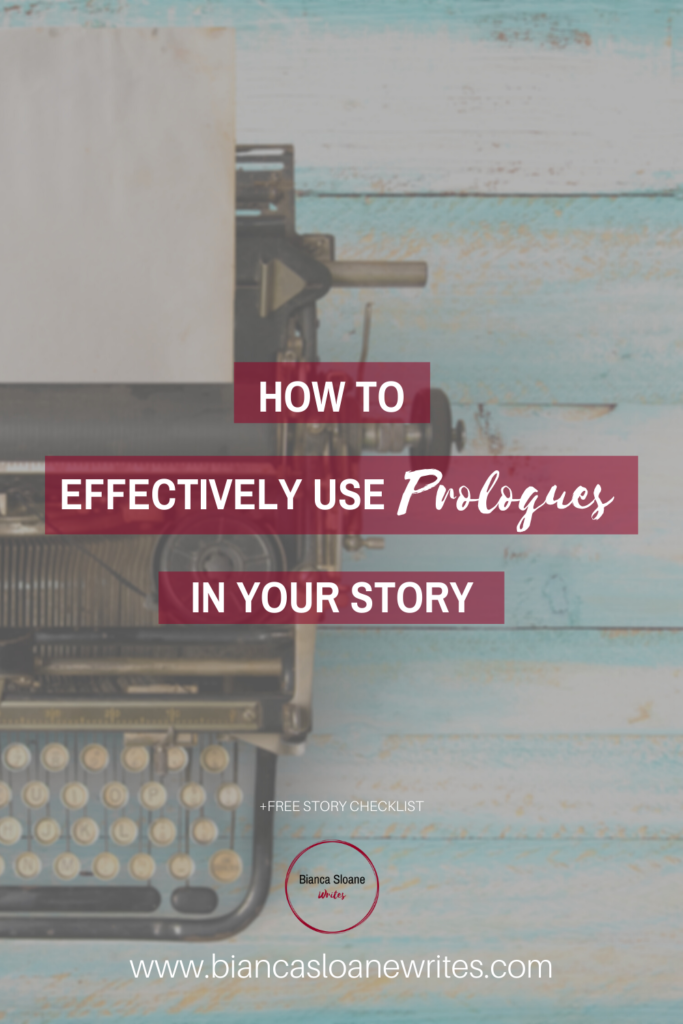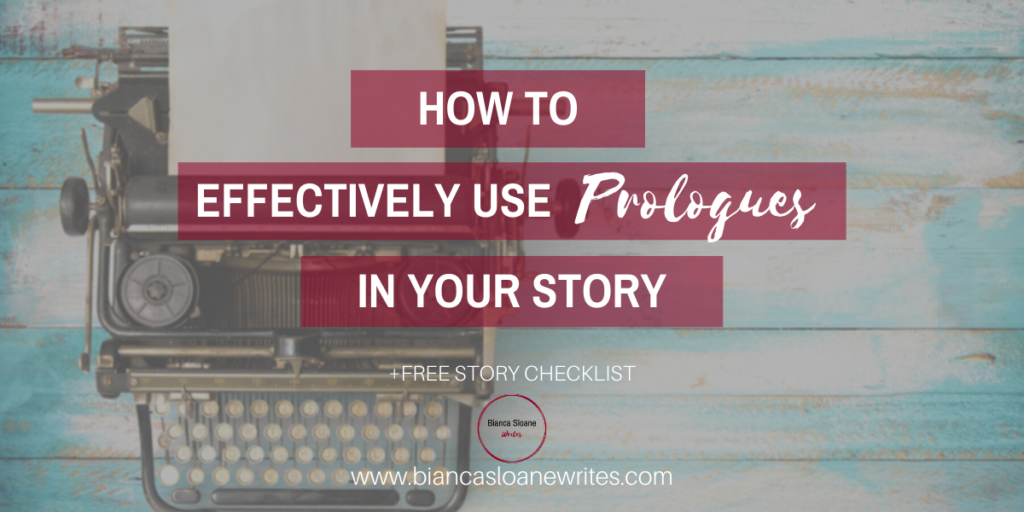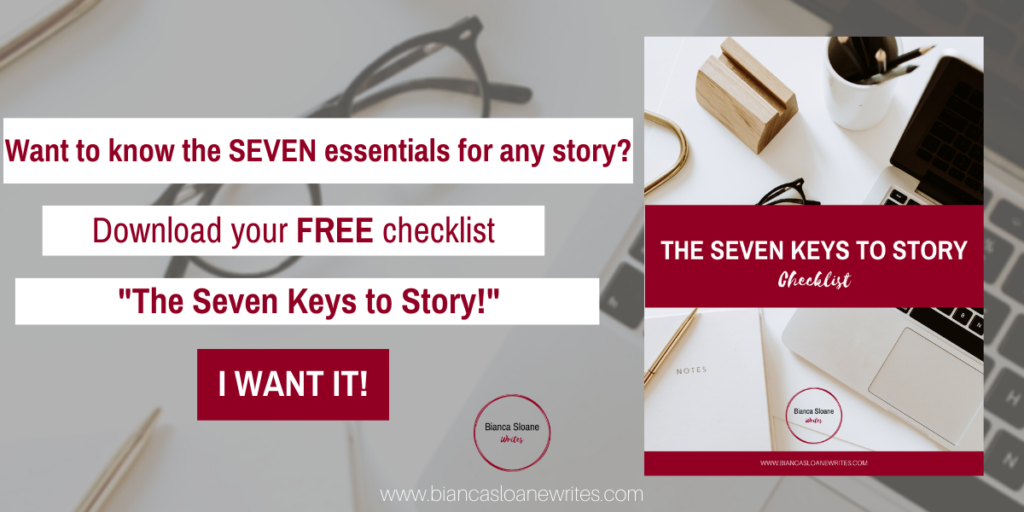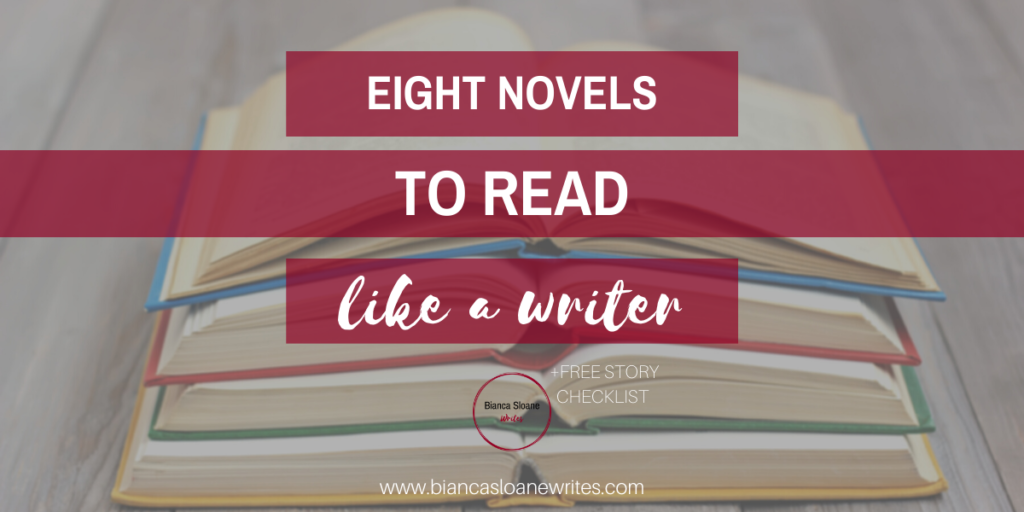How to Effectively Use Prologues in Your Story
The posts on Bianca Sloane Writes contain affiliate links, which may give a percentage of your purchases back to Bianca Sloane.
When I started to get serious about the craft of writing, some well-meaning person offered me the critique that I shouldn’t use prologues in my stories, because readers don’t read them.
That was news to me. I read a lot of mysteries and prologues are pretty standard. That’s usually when the crime is committed. I came to realize that like so much not-so-helpful writing advice, it’s not really true. Prologues get a bad rap because no one ever really tells you how to use them, and as a result they are used incorrectly.
Simply put, prologues are introductions. That’s it. They are a tool for setting up your story. Unfortunately, a common mistake is to use them for extraneous background or to spill all the details of the story, leaving no reason to read the book or watch the movie.
Done right, prologues can set the tone for your story, signaling to readers what to expect. Done wrong, they become info dumps for a lot of useless information or an unnecessary distraction from the rest of the action.
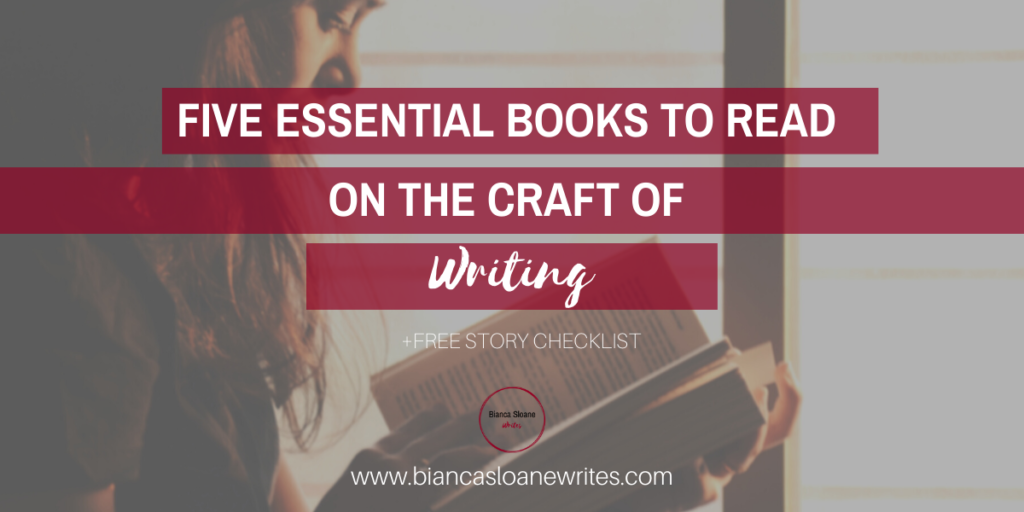
If you’ve can take out your prologue and it has no impact on the rest of the story, it has to go. If it leaves more questions than answers, it has to stay.
I went through this with KILLING ME SOFTLY. I had decided the prologue and chapter one were unnecessary, so I dropped them, starting the action with chapter two instead. When I workshopped it, everyone was confused about what was happening. This told me that the prologue and chapter were needed, so, back in they went.
Here are some rules of thumb to follow when crafting a prologue:
Make the prologue intriguing and/or mysterious
The opening pages of REBECCA by Daphne du Maurier detail the unnamed protagonist’s dream about the “secretive and silent” estate known as Manderley. The chapter closes by letting the reader know that “Manderley is no more.” We keep reading because we’re intrigued by this foreboding estate and why it is no more. We want to know its secrets. We want to know more about why it affects the protagonist so much.
The movie, A LETTER TO THREE WIVES, has a terrific premise: Addie Ross mails a letter to three different women to tell them she’s run off with one of their husbands. We keep watching to find out which husband and what could have possibly made him want to skip town with Miss Ross.
Use the prologue to plant questions at the beginning of a story that can only be answered by reading or watching the entire book/movie
As mentioned above, prologues are a common technique in mystery novels, because it’s often when the crime happens. We keep reading to find out whodunit, and/or why – maybe even how (for example, a “locked room” mystery). Sometimes, we don’t even know who the victim is, so we continue reading to learn their identity.
In THE GUEST LIST by Lucy Foley, in the first chapter, the lights go out at a wedding (which is taking place on a windy, rainy island, no less). When the lights come back on, the guests hear a scream. Who screamed? Why? What happened? We’re compelled to keep reading to get those answers.
In THIRTEEN REASONS WHY by Jay Asher, the delivery of a package of cassette tapes to high schooler Clay Jensen will offer clues as to why his classmate, Hannah Baker, took her life a few weeks before.
In THE MAGPIES by Mark Edwards, the prologue shows a couple abandoning their dream home, driven out by their neighbors. The next chapter shows another couple happily moving into the home, obviously having no idea what their getting themselves into. We have to know just how bad these neighbors are, what they did to the previous residents, and how awful will they make things for this new couple?
Tap the prologue to launch the world of your story
In historical fiction or fantasy novels, the prologue might be used to establish the world in which the characters will inhabit. In a dystopian story, the prologue might show us the “before” of the civilization we’ll be reading about.
NORTH AND SOUTH by John Jakes, which tells the story of the brewing conflict between the states, leading to the Civil War, uses a prologue to introduce two of the respective ancestors of the Hazard and Main families. The two spy each other briefly in 1687, having no idea how their families will later intertwine for centuries to come.
Remember the movie, WHAT EVER HAPPENED TO BABY JANE? The opening scenes, starting in 1917, establish the resentments and jealousies between Baby Jane and her sister, Blanche. Their animus culminates in a horrific car accident in 1935, with one sister brutally injured. We next see the sisters in 1962. Blanche was left paralyzed by the accident, a bitter and deranged Jane forced to care for her in their decaying mansion.
Not only do the prologue scenes explain the escalating animosity we’ll see on screen, they serve as a main driver of the conflict between the two throughout the movie. Eventually, those scenes will provide a whopper of a twist at the end.
Have the prologue introduce the narrator
Prologues can be especially effective for introducing the omniscient presence through whose eyes we’ll see events unfold. It could be an unreliable narrator. This person could be an outsider, a psychopath, a liar, an exaggerator, a drama queen, or a rube. This person is not always the protagonist or antagonist, though they can be. Whatever the case, the prologue will be an important tool for establishing their voice.
Think Nick in THE GREAT GATSBY. Lady Whistledown in BRIDGERTON (did you figure out her identity??). Holden Caulfield in THE CATCHER IN THE RYE. Humbert Humbert in LOLITA. Patrick Bateman in AMERICAN PSYCHO. Tyler Durden in FIGHT CLUB.
I could go on.
If it works for the story you’re trying to tell, the use of a prologue to introduce us to an intriguing character can make for compelling reading/watching.
You Don’t HAVE to use a prologue
There’s no writing rule that commands, “Thou shalt use prologues” in fiction. If it works for your story, use it. If it doesn’t take it out. However, don’t force it on the story because you read a book or saw a movie that had one.
You also don’t have to call it a prologue. It can just be “Chapter 1,” or if your book flashes back and forth in time, it can be titled, “Then” or “A Year Ago” or “Today.” Whatever works.
What do you think about prologues? Do you use them in your stories? Comment below!
